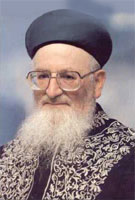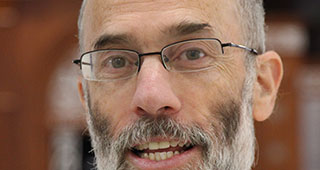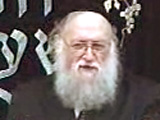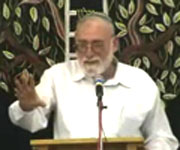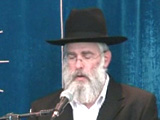Beit Midrash
- Sections
- Chemdat Yamim
- Bemare Habazak - Rabbis Questions
- Jewish Laws and Thoughts
- Jewish Laws and Customs
- Tzitzit & Tefillin
Answer: Considering the need to react to a mistake, you got a lot of things right, which we will now review. We will start with your assumption that your recitation of Yotzer Ohr was valid, and later we will revisit that assumption and its ramifications.
While it is hard to quantify such matters, one should not have tefillin on when there is even a small/modest chance that he might release gas (see Shulchan Aruch, Orach Chayim 37:3; Mishna Berura 30:4). The most important time to have tefillin on is for Kri’at Shema and Shemoneh Esrei (Shulchan Aruch, OC 25:4). After starting Baruch She’amar, when breaks are permitted only for important reasons, the best place to make important interruptions is between Yishtabach and Kaddish (with a minyan, other than for a chazan) or Yotzer Ohr (by oneself) (see Rama, OC 54:3). Even at this point (and certainly in your case), though, one should recite only the berachot and Baruch shem … and not the additional p’sukim (Ishei Yisrael 16:26*). While other possibilities exist, as we shall see (see also Mishna Berura 53:5), your plan makes great sense.

Bemare Habazak - Rabbis Questions (627)
Rabbi Daniel Mann
493 - Birkat Kohanim in a Shiva House
494 - Mistake in Beracha on Delayed Laying of Tefillin – part I
495 - Mistake in Beracha on Delayed Laying of Tefillin – part II
Load More
Finding yourself in the midst of putting on tefillin in the midst of one of birchot Kri’at Shema (Yotzer Ohr ends with "Yotzer Hame’orot") indeed raises questions. One does not make a beracha on tefillin in the middle of a section/beracha, and unless it is during Kri’at Shema, one should wait until the next beracha break to put on the tefillin with the berachot (Shulchan Aruch, OC 66:2; Be’ur Halacha ad loc.; Mishna Berura ad loc. 15; Ishei Yisrael 19:13). There is a minority opinion (see Mishna Berura 54:13) that recommends putting on the tefillin at the first opportunity, even in the middle of a beracha, and making the beracha on them after touching them at the next break. You anyway had little to gain, with the tefillin already on (see opinions in Dirshu 66:5), by reciting L’haniach Tefillin before Yotzer Hame’orot, so waiting had logic.
In your case, though, there was another factor. One must not speak between the tefillin shel yad and tefillin shel rosh, which you did with the entire beracha of Yotzer Ohr. The severe issue (Sota 44b) is based on the fact that the break creates an artificial need for an extra beracha (Mishna Berura 25:28), but that did not apply to you. You did not make the beracha in the first place and should have recited the same L’haniach Tefillin (for the ongoing mitzva of the shel yad) and Al Mitzvat Tefillin (followed by Baruch shem k’vod … - Ishei Yisrael 19:13) for the shel rosh. There is no problem per se with having only one of the tefillin on for extended periods, and when necessary this is prescribed (Shulchan Aruch, OC 26:1). Nevertheless, it is relatively important to do the two in proximity to each other (Mishna Berura ibid.).
Therefore, we would have recommended to put on the shel rosh without berachot and make up both berachot after Yotzer Hame’orot. Although we generally want a mitzva’s berachot to precede the mitzva (Pesachim 7b), there are agreed precedents that the beracha on the tefillin will come later. One example is one who is traveling precariously before the time for tefillin (Shulchan Aruch, OC 30:3), and another is one whose tefillin arrive right between Ga’al Yisrael and Shemoneh Esrei (Shulchan Aruch, OC 66:8). On the other hand, neither setup is perfect and neither is forbidden, and therefore what you did was also reasonable.
To read the next Shiur click here.

Ask the Rabbi: Minyan or Tallit and Tefillin?
Rabbi Daniel Mann | Tammuz 5785

Ask the Rabbi: Mincha after Sunset
Rabbi Daniel Mann | Cheshvan 5786

Ask the Rabbi: Taking a Different Object than Lost
Rabbi Daniel Mann | Adar 5785

Ask the Rabbi: Beracha on Mediterranean and Atlantic
Rabbi Daniel Mann | Sivan 5785

Rabbi Daniel Mann

Washing Hands with Soap on Yom Kippur
Tishrei 4 5776

Giving an Envelope on Shabbat to Use for Donations
5773

Reciting Borei Nefashot on Food When One Will Still Drink
Sivan 3 5780















